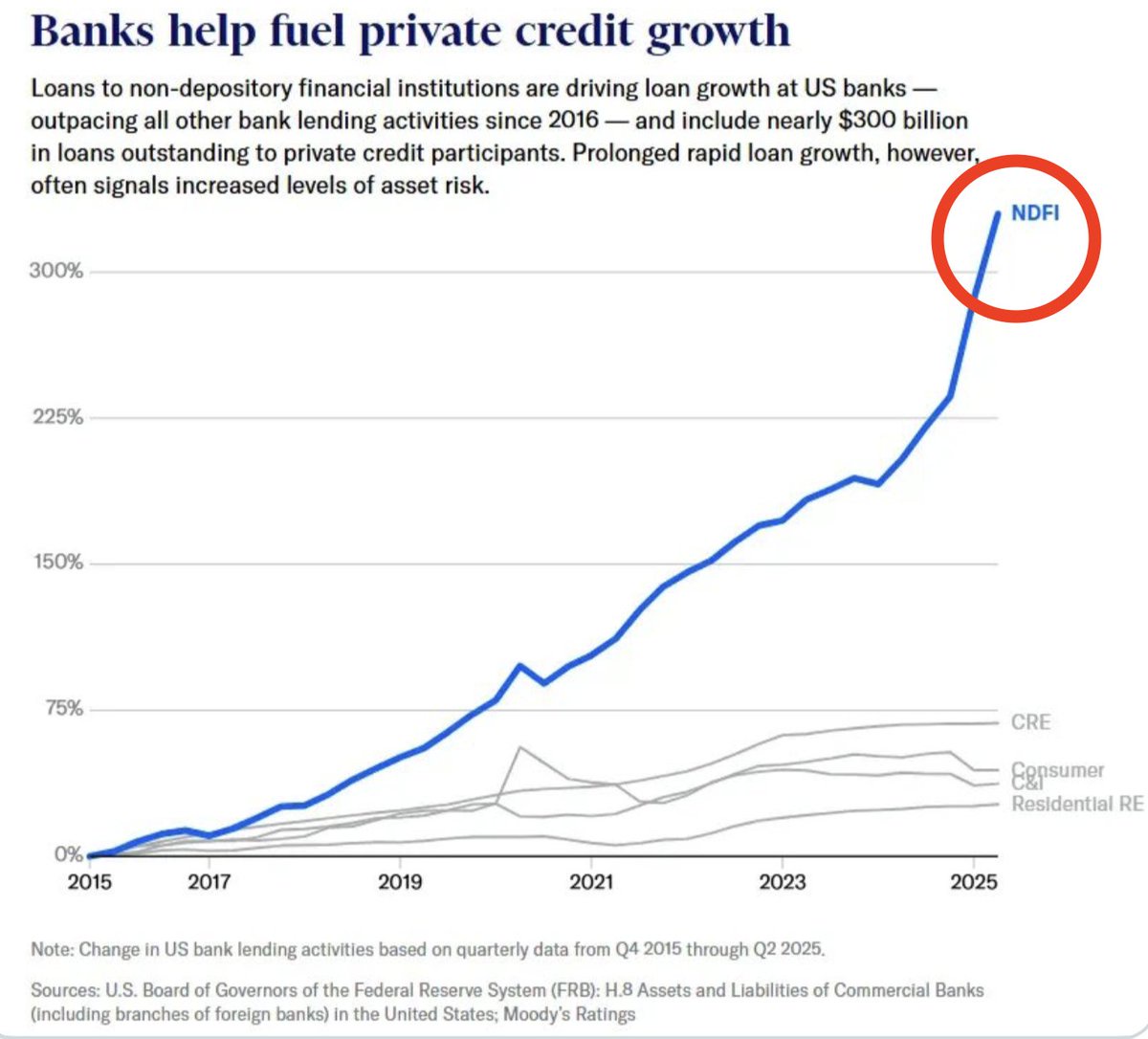
This chart shows how bank lending has quietly reshaped the credit world. Since 2015, loans to non depository financial institutions (NDFIs) basically private equity and private credit funds have skyrocketed nearly 300%, while everything else has barely moved. Consumer loans, commercial real estate, residential lending, all flat. The growth is almost entirely in one direction, banks lending to the lenders.
After the 2008 crash, regulators tightened the screws on traditional banks. Rules under Basel III and Dodd Frank made certain types of lending like leveraged loans and middle market credit so capital intensive that banks started backing away. That vacuum got filled by private credit funds, which grew from a niche market in the early 2000s to a roughly $3 trillion force by 2025.But instead of fighting back, banks found a new angle. They realized they could make more money by financing private credit funds than by lending directly to businesses. It’s cleaner, cheaper, and fits neatly within regulatory constraints. Lending to one large, collateralized fund is far simpler than managing hundreds of smaller risky loans. Those funds also carry big equity buffers, Business Development Companies hold roughly 36% in capital reserves so banks can earn solid returns without holding as much capital themselves.The relationship works for everyone. Private credit funds get access to cheap revolving credit lines which lets them lend more aggressively. Banks collect steady interest and fees on big, low-maintenance loans. Borrowers backed by private equity get faster funding without the slow, compliance-heavy process of bank credit. Everyone’s happy at least for now.The problem is that all this lending has made the two worlds deeply intertwined. The risks banks thought they’d outsourced haven’t vanished, they’ve just shifted. If private credit borrowers start defaulting, those funds will draw down their bank credit lines at the exact moment banks are under stress too. It’s a feedback loop waiting for the wrong conditions.Private credit has never lived through a major recession. The entire industry was built in an era of low interest rates and easy liquidity. If the economy slows sharply, banks could find themselves exposed through the very channels they thought made them safer. Regulators are trying to keep up, collecting more data and watching NDFI lending closely, but the growth is outpacing oversight.What this chart really shows is the new face of post-crisis banking. Banks stopped being the main act. Now they’re the producers behind the show. It’s clever, profitable, and regulatory friendly but it also means that banks and private credit are now part of the same ecosystem. When one stumbles, the other follows.Source: StockMarket.News
The copyright of this article belongs to the original author/organization.
The views expressed herein are solely those of the author and do not reflect the stance of the platform. The content is intended for investment reference purposes only and shall not be considered as investment advice. Please contact us if you have any questions or suggestions regarding the content services provided by the platform.


